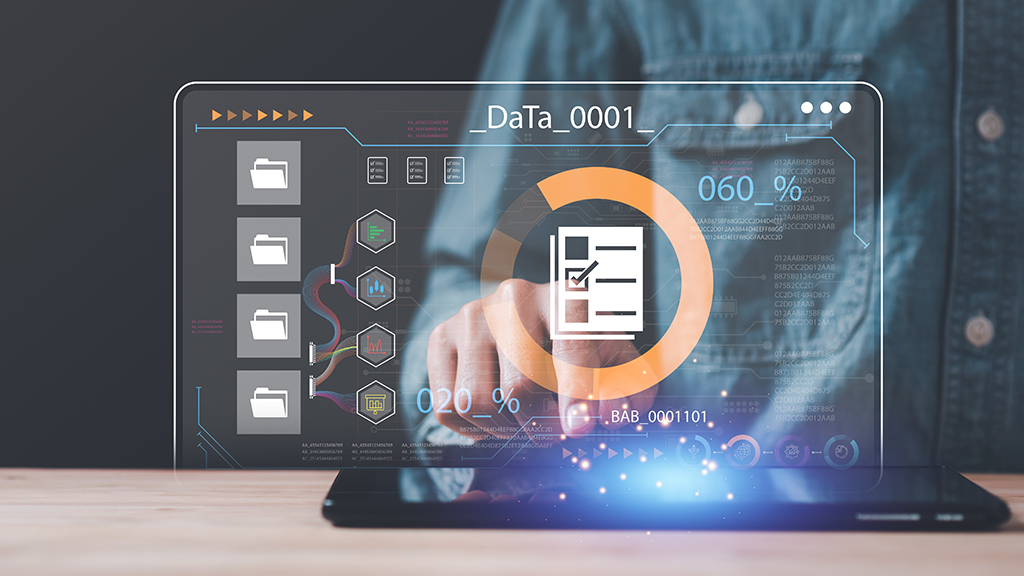
Global Content Lead - Tech & Consulting
Subscribe to the newsletter
In today’s data-rich landscape, we find ourselves amidst an abundance of data flowing incessantly from the devices we use, the applications we construct, and the interactions we engage in. Industries spanning diverse sectors have harnessed this data to navigate profound digital transformations, thereby gaining distinct competitive advantages.
The Global AI market is expected to reach $267 billion by 2027, with the expectation of contributing $15.7 trillion to the global economy by 2030. As we venture into a new era characterized by the prominence of Artificial Intelligence, the significance of data is undergoing a remarkable amplification.
At the forefront of this evolution are Generative AI and groundbreaking services such as Azure OpenAI. These dynamic technologies are orchestrating a paradigm shift in AI experiences, fundamentally reshaping the ways in which employees allocate their invaluable time. However, the bedrock upon which these meticulously tailored AI experiences are constructed is a consistent supply of clean data, harnessed from an analytics system that not only operates with unparalleled precision but is seamlessly integrated.
Regrettably, within the highly fragmented data and AI technology market, saturated with numerous vendors and services, customers often find themselves piecing together a complex array of services from multiple providers to enable a data-driven culture within their organization. This practice comes with both costs and challenges when businesses are striving for the seamless integration and smooth operation of these services.
To bridge this gap and maximize business value, “Microsoft Fabric” emerges as the solution, ensuring seamless integration and facilitating business growth.
What is Microsoft Fabric?
Microsoft Fabric is a comprehensive, unified analytics platform that transforms how people access, manage, and utilize data and insights by seamlessly integrating every data source and analytics service into a cohesive, AI-powered platform. Furthermore, this solution is reinforced by a shared infrastructure that ensures robust data security, governance, and compliance.

Fabric is designed to simplify developing, deploying, and managing highly scalable and reliable microservices applications. Microsoft originally developed it to support their own cloud services like Azure SQL Database and Azure Cosmos DB. Over time, it became a standalone platform for building and managing a wide range of applications, both on-premises and in the cloud.
The Microsoft Fabric service is built on the foundation of SaaS, taking simplicity and integration to a new level. It combines new and existing Azure Synapse, Power BI, Azure Data Factory, Data Science, Data Warehouse, Predictive Analytics, and Data Engineering components into a single environment, presenting these components in customized user experiences. This empowers both data and business professionals to tap into the potential of their data, laying the groundwork for the AI era.
The SaaS backbone of Fabric
Microsoft Fabric consolidates various data experiences within a unified SaaS framework. Within the Microsoft Fabric SaaS ecosystem, data and services seamlessly harmonize. IT teams can centrally configure essential enterprise functionalities, and permissions are automatically propagated across all underlying services. Furthermore, data sensitivity labels are inherited automatically across all elements within the suite.

Fabric empowers various business teams, including engineers, warehouse personnel, scientists, analysts, and business users, offering role-specific experiences tailored to each individual’s needs.
Fabric’s strength lies in its seven core building blocks
Microsoft Fabric is a single product featuring a unified architecture, providing developers with all the capabilities they need to extract insights from data and deliver business value within minutes.
The seven core components are at the heart of Fabric include:
- Data Factory provides more than 150 connectors to cloud and on-premises data sources, drag-and-drop experience for data transformation, and the ability to orchestrate data pipelines.
- Synapse Data Engineering enables great authoring experiences for Spark, instant start with live pools, and the ability to collaborate.
- Synapse Data Science provides an end-to-end workflow for data scientists to build sophisticated AI models, collaborate easily, and train, deploy, and manage machine learning models.
- Synapse Data Warehousing provides a converged lake house and data warehouse experience with industry-leading SQL performance on open data formats.
- Synapse Real-Time Analytics enables developers to work with data streaming in from the Internet of Things (IoT) devices, telemetry, logs, and more, and analyze massive volumes of semi-structured data with high performance and low latency.
- Power BI in Fabric provides industry-leading visualization and AI-driven analytics that enable analysts and business users to gain insights from data. Furthermore, the Power BI experience is seamlessly integrated into Microsoft 365, ensuring that users can access relevant insights within their familiar workspace.
- Data Activator provides real-time detection and monitoring of data and can trigger notifications and actions when it finds specified patterns in data—all in a no-code experience. This integration is currently not a part of the platform but is scheduled to come soon.
OneLake and data lakehouses in Microsoft Fabric

It is clear that Fabric is a platform that integrates data and streamlines and consolidates data processes. OneLake is central to its framework, which is a data lake service that facilitates efficient reuse of data throughout the system. Microsoft Fabric unifies OneLake and the lakehouse architecture across your organization.
OneLake, is the foundation on which all services of Fabric are built. It offers a unified location for storing your organization’s data where the experiences operate. Moreover, OneLake is built on top of Azure Data Lake Storage Gen2, and it offers a unified SaaS experience and a tenant-wide store for data, serving professional and citizen developers.
You may also call OneLake the OneDrive for your data. Just like we save Microsoft Office 365 products (Excel or Word) onto OneDrive, OneLake stores all your data for each application within Fabric in a single place. In means there is one copy and one format of your data. This minimizes data duplication and ensures data consistency across the entire data pipeline.
Before OneLake, organizations had established multiple data lakes for different teams instead of collaborating through a unified data lake, even if this meant additional resources. The purpose of introducing OneLake was to address these issues by dismantling data silos and enhancing cooperation, all while streamlining the management of organizational data.
The AI advantage in Microsoft Fabric
Fabric leverages the power of AI with the integration of Azure OpenAI Service across its layers, unlocking the full potential of your data. Developers harness generative AI for data-driven insights while business users discover valuable information. Copilot, a key feature in Microsoft Fabric, introduces conversational language to all data-related tasks, from crafting flows and pipelines to coding, modeling, and visualization. You can even craft customized language experiences by seamlessly combining Azure OpenAI Service with your data through plug-ins.
Moreover, Copilot in Microsoft Fabric ensures robust enterprise data security and privacy. It adheres strictly to your data policies, and Microsoft does not employ your data for training Copilot’s base models.
The transformative benefits of Microsoft Fabric
By now, it’s clear that Microsoft Fabric can help organizations and individuals turn large and complex data into actionable workloads and analytics. Here is a closer look at some of the impressive benefits of Microsoft Fabric:
Unify data estate
Microsoft Fabric lets you establish an open and lake-centric hub using data engineers to connect and curate data from different sources. This eliminates sprawl and lets you create custom views which everyone can see.
Manage powerful AI models
Microsoft Fabric makes analysis easier by developing AI models on a single foundation without moving data. This allows data scientists to deliver value promptly.
Make strategic decisions
Through insights generated within Microsoft Excel, Teams, and other Microsoft 365 apps, every person in the organization can make data-driven decisions and innovate faster.
Govern data
The built-in security, compliance and governance of Microsoft Fabric lets you connect people and data through an open and scalable solution.
How does Microsoft Fabric compare with other analytics platforms?
When considering your options in the realm of data analytics, it’s only natural to question how Microsoft Fabric’s data analytics capabilities differ from other platforms and what makes it truly exceptional. Let’s delve into the key factors that set Fabric apart from the competition.
- Simplicity: Fabric offers quick sign-up and deployment, eliminating the need for infrastructure setup and maintenance. All features are easily accessible through a single web portal.
- Completeness: Fabric covers end-to-end analytics needs, from data integration to modeling, visualization, analysis, and AI/ML operations, providing a competitive advantage.
- Collaboration: Teams, including data engineers, data scientists, analysts, and business users, can seamlessly collaborate on the platform, sharing insights and best practices.
- Governance: Fabric establishes a single source of truth with unified governance features, ensuring data quality, security, privacy, compliance, and access control.
- Innovation: Stay ahead with generative AI and language model services like Copilot, integrated into Fabric for groundbreaking AI experiences.
- Openness: OneLake, the primary data lake, uses open formats like Parquet and interfaces with other cloud services like Amazon S3.
What is the cost of Microsoft Fabric?
You can get started with Microsoft Fabric by signing up for a free trial. You can also get a fixed Fabric trial capacity for each business user, which can be used for any feature or capability.
When it comes to Microsoft Fabric cost, the provider adopts the same licensing model and terminology from Power BI premium. Individual and organizational license versions are available. Each organization must have a minimum of one “organizational” and one “individual” license.
Conclusion
Microsoft Fabric represents a groundbreaking platform that seamlessly integrates a spectrum of Azure tools and data services into a unified, cohesive framework.
At its core, Microsoft Fabric offers a wealth of features, including the notable OneLake and versatile workloads, empowering enterprises and data experts to make informed, data-driven decisions. Whether you’re a seasoned data scientist or a business analyst eager to unlock the full potential of your data, Microsoft Fabric provides a comprehensive solution that simplifies complex data operations.
To learn how Microsoft Fabric can enhance your organization’s data capabilities, please don’t hesitate to contact us at marketing@confiz.com for a detailed discussion. Your journey toward harnessing the power of Microsoft Fabric starts here!



